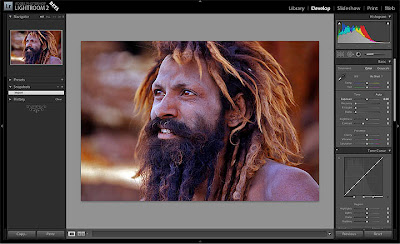I've been asked by a few readers to share my preferred type of clothes when traveling on my photo expeditions or on assignments. It's an important issue because weight, durability, ease of washing/drying, etc all come into play. So here are the items that usually make it into my dufflebag...there must be womens' equivalents at the same stores. (Since I don't mean this to be adverts for the companies that stock these items, I won't link to them...sorry).
1. I lost my old safari jacket in Bhutan last year, and its subsequent replacement from Orvis wasn't as comfortable. But I've recently found an alternative at Cabela's for the reasonable price of $45. It even has a cheesy map of Africa on the inside back should I travel there and get lost. Now, this is an important article of clothing because it has many pockets, which can come in handy should the check-in staff at my airline of choice decide that my hand luggage with all the photo gear is too heavy to bring in the cabin. I just stuff the jacket's pockets with lenses and stuff, and I'm waved through. Idiotic, I know...but it happened twice, so long live the safari jacket!

2. Apart from a bunch of tshirts, I also pack a few Cabela's Guidewear® GXII™ shirts. These are made for fly-fishing, and have zipper side vents in the underarms for extra ventilation, a cooling mesh liner and the UPF 40 shell fabric is great. The large chest pockets are very useful for CF cards and other stuff. Easy to wash (only when I really need to!) and fast to dry.

3. As for the trousers, I'm partial to either jeans or to lightweight cargo pants by Eastern Mountain Sports called Profile Zip-Off. They're made of a soft, quick-drying nylon with UPF 30+ protection, and have many side pockets. Again, these are easy to wash and dry very quickly. Both shirts and trousers are lightweight and take no space at all in my luggage. The trousers retail for about $50.

4. Finally, my favored footwear at the moment is the Merrell Intercept, which I bought in London. I'm not sure if mine are really the Intercept model, but in any event, they look very similar...less gaudy perhaps. They're not made for heavy trekking, but they're just right for long hard walks. I think I paid the equivalent of $120 for my pair (yes, I know...the dollar is in the pits).

5. The final must-have article of clothing is my Khmer kroma scarf. This candid admission will earn me the sneers of many, but most of us "serious" photographers have one of those in their luggage. They're invaluable for a variety of uses...lens cleaner, snot remover (not mine...those of the children I photograph), flag to attract the attention of wandering participants on my photo expeditions, fly-swatter, etc. I also carry a few bandannas, which are always useful.

 Well, time does fly. It's been a month since I signed on to try Lightroom 2.0 which means that the free trial period is over, and I now have to decide whether to buy it for $300.
Well, time does fly. It's been a month since I signed on to try Lightroom 2.0 which means that the free trial period is over, and I now have to decide whether to buy it for $300. 










